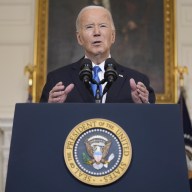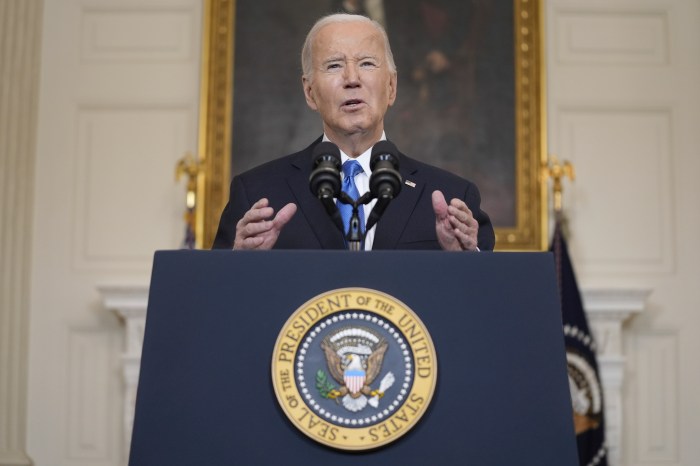NEW YORK (Reuters) – U.S. consumer price growth slowed sharply in April as gasoline prices eased off record highs, suggesting that inflation has probably peaked, though it is likely to stay hot for a while and keep the Federal Reserve’s foot on the brakes to cool demand.
The consumer price index rose 0.3% last month, the smallest gain since last August, the Labor Department said on Wednesday. That stood in sharp contrast to the 1.2% month-to-month surge in the CPI in March, which was the largest advance since September 2005. STORY: TABLE:
MARKET REACTION:
STOCKS: S&P e-mini futures reversed early gains and were down 0.99%, pointing to a weak open on Wall Street
BONDS: Yields on benchmark 10-year notes jumped to 3.0640%. Two-year Treasury yields jumped to 2.7194%
FOREX: The dollar index turned 0.1% higher
COMMENTS
ROBERT PAVLIK, SENIOR PORTFOLIO MANAGER AT DAKOTA WEALTH IN FAIRFIELD, CONNECTICUT
“The headline number was a little higher than expected. The core was the problem, coming in hotter than expected and about double the last month. This indicates inflation may not have peaked yet. That seems to be a big concern for the market. In response to that futures sold off and continue to sell off.”
“What you’re seeing there is continued fears the Fed is going to have to act aggressively to combat inflation. Inflation forces the Fed’s hand. Inflation along with moves by the Federal Reserve are going to slow down the U.S. economy. There’s no doubt about it. People have less money to spend because they’re having to spend it in other places, so there’s less discretionary spending.”
KARL SCHAMOTTA, CHIEF MARKET STRATEGIST, CAMBRDIGE GLOBAL PAYMENTS, TORONTO
“Far stronger than expected, especially on the core measure, suggests that underlying inflation pressures remain quite strong and quite persistent. We are seeing a re-anchoring of the front-end of the interest rate curve, I’m seeing June expectations around 70 basis points so you are looking at least at 2% in additional tightening over the next four meetings. So the dollar is just steamrolling everything else and risk appetite is getting demolished here, we have seen equity indices sell off sharply, your high-beta or commodity-linked currencies are selling off as well and that flight to the dollar is continuing here.”
BRIAN DORST, SENIOR TRADER, THEMIS TRADING LLC, NEW JERSEY
“The data was hotter than expected, and markets turned on it — month over month was up a touch, excluding energy, so futures turned. But the Fed will stay the course, because the estimates aren’t that far off. It’s not extremely shocking, but it shows that inflation is very much front center.”
GREG BASSUK, CHIEF EXECUTIVE OFFICER, AXS INVESTMENTS, NEW YORK CITY
“The data underscores that inflation and rising prices likely has not yet peaked. Investors are going to be concerned that the Fed is going to take an even more aggressive approach, which is going to fuel continued concerns around a potential recession. So we do think this is going to be a big, big negative for the markets today.
“We definitely think that it increases the likelihood of more aggressive rate hikes in part because inflation seems to not be slowing down but on top of that, we also have significant concerns related to oil and gas supply chain, with the war in Ukraine, as well as with the China lockdown on COVID. So with supply chain concerns and a potentially more aggressive Federal Reserve policy around tightening and raising rates, the likelihood of not only a U.S. but a global recession is definitely going to be weighing heavily on the markets.”
JAY HATFIELD, CHIEF EXECUTIVE OFFICER, INFRASTRUCTURE CAPITAL MANAGEMENT, NEW YORK
“CPI printed slightly hot versus expectations. We continue to forecast that inflation does not decelerate significantly until the spring, where we expect energy prices to peak and housing and rent price increases to decelerate.”
THOMAS HAYES, CHAIRMAN, GREAT HILL CAPITAL, NEW YORK
“It was a mixed bag. On the one hand, it’s lower than last month, so inflation may have peaked. On the other, it’s worse than expected. There’s something for everyone to hate, and something for people to love.”
“The good news is that the numbers came down off of last month. The bad news is that they’re a little higher than expected. Used car prices, which was the driver, are down 4/10ths of a percent, so that’s a positive development, and markets are mixed as a result. So inconclusive, but trending in the right direction.”
“NASDAQ (futures) are down the most because rates are going up in anticipation that the Fed will have to stay pretty aggressive for some time. The 10 year yield is back up at 3.04% which hurts NASDAQ and tech the most. But unbalanced mix. Good news it came in lower than last month on both fronts, bad news is higher than expected for consensus.”
PETER CARDILLO, CHIEF MARKET ECONOMIST, SPARTAN CAPITAL SECURITIES, NEW YORK
“I’m a little disappointed in inflation number. It shows a little moderation, signs that inflation is peaking, but the core rate is a little bit on the high side. We could see a back-up in yields but I don’t think they’ll go back to the highs registered on Monday.”
“The bond market remains skittish. I think the Fed will be able to fight inflation, but while they will bring it down, but there are always outside factors, such as the (Russia-Ukraine) war and if a new variant should show up in the (United States).”
“I see a peak occurring, but there’s always that outside chance of curve-ball, such as a full escalation of the war between Russia and Ukraine, dragging NATO into the picture. Worst case scenario energy prices will go higher but not so much that it will be meaningful.”
“But I think we’ve reached that peak. We could see still higher prices for oil and grains, but they will be limited.”
“The Fed will continue with (50 basis point) rate hikes for the next three meetings, and a quarter of a point for the next few meetings. But I don’t think they’ll go much beyond that. The important thing is to eradicate inflation, but it won’t happen overnight. The tough talk from the Fed will continue.”
ROSS MAYFIELD, CHIEF INVESTMENT STRATEGIST, BAIRD PRIVATE WEALTH MANAGEMENT
“A bit of an upside surprise on all counts, so the peak inflation story will definitely have to be reconsidered in light of this data.””They’re (Federal Reserve) pretty well locked on to 50 basis point rate hikes. The data is an upside surprise, but it’s still a drop from March. So in a sense, they’re probably on the right path and they will continue with their previously laid out plan.””Ultimately it’s hard to say whether we’ve made a bottom (for tech) or not, probably there could be more room to the downside. We just expect the volatility that to continue.”
PAOLO ZANGHIERI, SENIOR ECONOMIST, GENERALI INVESTMENTS, MILAN
“Base effects pulled down -as expected- both headline and core yoy inflation, but monthly price rise proved higher than expected, confirming the view that the return of inflation to more tolerable values will take time. What is more concerning is the steady rise of shelter inflation (rents), which is a consequence of the fast increase in house prices. Higher interest rates are starting cooling down the construction sector, but shelter inflation (which account for over a third of total core inflation) will stay strong for a long time. Core inflation was also boosted by the unexpected pickup in new vehicles prices, as bottlenecks makes it hard for supply to keep up with demand. Risks for inflation remains tilted to the downside in part due to factors largely beyond the Fed’s control such as commodities and global goods production chains, heavily impacted by the lockdowns in China Overall today’s data add to the case of the strong frontloading called for by Powell in the last meeting, who also suggested the possibility of two more 50bps rise in June and July. However, this will keep concern on the possibility of a recession high, and ultimately weakening growth may lead the Fed to temper it tightening after the summer.”
(Compliled by the global Finance & Markets Breaking News team)


















